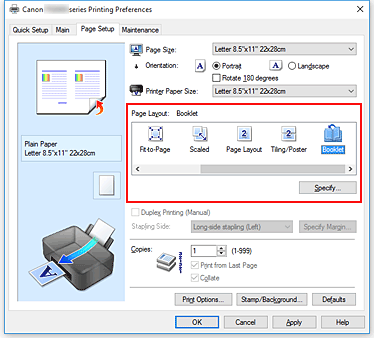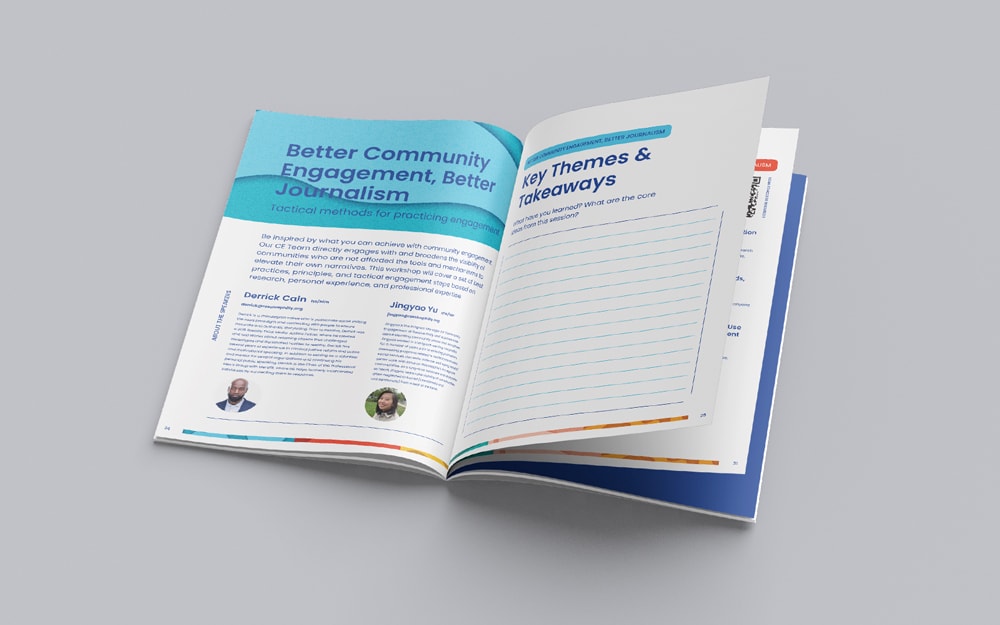A Step-by-Step Guide to Planning a Custom Booklet Printing Campaign
A Step-by-Step Guide to Planning a Custom Booklet Printing Campaign
Blog Article
The Crucial Overview to Understanding Booklet Printing Options and Techniques
The procedure of booklet printing involves multiple considerations that can greatly influence the final product. From selecting the appropriate style and dimension to comprehending the subtleties of binding approaches, each choice plays a vital duty. Additionally, variables such as paper stock and printing strategies additional influence the performance of the booklet. As one navigates these alternatives, it comes to be crucial to comprehend exactly how they adjoin and what that means for the total end result.
Recognizing Brochure Styles and Sizes
When considering booklet printing, comprehending the different layouts and dimensions readily available is vital for attaining the wanted discussion. Brochures can be created in many formats, including saddle-stitched, spiral-bound, and perfect-bound, each offering distinctive advantages. Common sizes range from common letter (8.5 x 11 inches) to smaller options like A5 (5.8 x 8.3 inches), enabling flexibility based on web content and target audience.Selecting the proper dimension can affect both the format and viewers involvement. Bigger sizes might match visually driven web content, while smaller formats might be a lot more user-friendly and portable. Additionally, the number of web pages affects the selection of binding approach, as thicker pamphlets might call for tougher bindings. Inevitably, comprehending these aspects permits an extra tailored method, making certain that the last product aligns with the designated message and aesthetic, improving the overall performance of the interaction.
Choosing the Right Paper Stock

Binding Techniques: Options and Factors To Consider
When it concerns binding techniques for pamphlets, several alternatives are offered, each with distinct advantages. Saddle stitch binding provides an economical remedy for thinner brochures, while excellent binding techniques give an even more refined seek thicker magazines. Wire-O binding stands out for its toughness and simplicity of use, making it optimal for files that call for flexibility.
Saddle Stitch Binding
Saddle stitch binding uses a practical and cost-efficient solution for constructing pamphlets, making it a preferred option amongst businesses and authors. This binding approach entails folding sheets of paper in half and stapling them along the fold line, developing a orderly and neat look. Typically suitable for pamphlets with a reduced web page matter, saddle stitching is suitable for magazines, pamphlets, and training products. The simpleness of this technique allows for fast manufacturing and is commonly favored for short runs or promotional things. It is necessary to note that saddle stitch binding might not be ideal for thicker brochures, as the spine may not hold up under boosted weight. In general, it continues to be a reliable alternative for several printing jobs.
Perfect Binding Techniques
Perfect binding is an extensively utilized technique that offers a expert and polished coating to magazines and brochures. This method involves gluing the web pages with each other at the spinal column using a strong adhesive, allowing for a clean side and the capacity to hold a larger variety of pages contrasted to saddle sewing. Perfect binding is particularly ideal for thicker pamphlets, such as brochures and annual records, where a tough, level spinal column is preferred. Additionally, it offers the option for a printed cover that can be developed to enhance aesthetic allure. Nonetheless, considerations such as web page count, paper weight, and the planned use the brochure must be thought about, as they can impact durability and total high quality.
Wire-O Binding Alternatives
Wire-O binding, recognized for its sturdiness and versatility, offers a superb alternative for brochures that require very easy page turning and an expert appearance. This binding technique utilizes a series of metal loopholes that hold pages safely, enabling them to lie flat when open. It is specifically suitable for manuals, presentations, and directories because of its robust nature. Wire-O binding is available in numerous shades and diameters, accommodating various page matters and thicknesses. Furthermore, it allows the incorporation of tabs and covers, improving the booklet's total visual. Considerations for Wire-O binding include the selection of wire color, the dimension of the loops, and the extent of personalization preferred, every one of which can exceptionally influence the final item's appearance and functionality.
Digital vs. Offset Printing: Which Is Best for You?
When picking a printing technique for booklets, comprehending the distinctions in between digital and offset printing is crucial. Digital printing uses modern technology to create premium prints quickly and cost effectively, making it perfect for brief runs or jobs calling for quick turn-around times. It allows for modification, offering the capacity to print on-demand with marginal waste.In contrast, offset printing is a traditional technique that excels in creating huge quantities with regular high quality. It entails transferring ink from a plate to a rubber blanket, after that to the paper, which results in specific details and dynamic shades. Balance out printing typically needs longer setup times and is more economical for bigger volumes.Ultimately, the selection in between digital and counter printing depends on task requirements, budget, and desired quantity. For small, time-sensitive tasks, electronic may be the most effective option, while balanced out might be more effective for bigger, top quality productions.

Creating Your Booklet: Tips and Ideal Practices
When designing a brochure, mindful attention to layout, font choice, and shade usage can significantly enhance its performance. A well-structured format guides the viewers's eye, while ideal font styles assure readability and share the preferred tone. Furthermore, effective usage of color can evoke emotions and highlight vital look what i found info, making the overall layout much more impactful.
Choosing the Right Format
Exactly how can one effectively pick the ideal layout for a booklet? Initially, it is important to assess the pamphlet's function and target audience. A tidy, organized design improves readability and interaction. Using a grid system can assist in lining up components constantly, creating a specialist look. In addition, incorporating aesthetic hierarchy with varying sizes and placements of photos and text can lead the reader's eye and stress essential details. It is also crucial to leave adequate white space, which stops congestion and allows for much better emphasis. Finally, checking different formats through mock-ups can supply understanding into exactly how the layout carries out in real-world scenarios, making certain that the end product satisfies both functional and visual demands.
Choosing Appropriate Fonts
A well-chosen font style can considerably improve the general layout of a pamphlet, enhancing the format and enhancing the web content's message. The option of fonts must think about readability, particularly for body message, as it ensures the info is easily accessible to all viewers. Sans-serif typefaces are often preferred for electronic layouts, while serif font styles can lend a typical feel in published products. It's advisable to restrict font selections to 2 or 3 to preserve visual comprehensibility. In addition, typeface dimension plays an essential role; headings should be not frustrating yet unique, while body text need to be comfy for reading. When choosing font styles, alignment with the pamphlet's style and target audience is important for reliable interaction and aesthetic appeal.
Effective Use of Color
Shade offers as a powerful device in booklet style, shaping understandings and assisting viewers emotions. It can stimulate sensations of calmness, count on, or exhilaration, depending on the colors picked. Designers must take into consideration shade theory principles, making certain that the chosen combination straightens with the pamphlet's message and target audience. look at here now For instance, using warm shades like red and orange can develop necessity, while cooler tones like green and blue foster tranquility.Additionally, comparison plays an essential role; complementary colors can improve readability and aesthetic appeal. Uniformity in shade use throughout web pages better reinforces brand name identity and communication. Eventually, effective color implementation not only captures attention but also reinforces the brochure's function, making it an essential aspect of effective layout.
Ending Up Touches: Coatings and Unique Effects
While lots of take into consideration the web content and format of a brochure the most important components, the finishing touches, such as finishings and unique results, play a vital duty in enhancing its overall charm. Coatings can supply defense and durability, ensuring that the pamphlet holds up against wear and tear. Matte surfaces provide a sophisticated, non-reflective surface area, while shiny finishings can make colors show up more vibrant and eye-catching. Special effects, like embossing or aluminum foil stamping, include a tactile measurement that can develop a remarkable perception. These strategies can highlight certain areas, accentuating essential details or producing aesthetic rate of interest. Additionally, UV finish can offer a high-shine finish that boosts the general look.Together, these ending up touches not only boost the booklet's visual but additionally interact professionalism and trust and attention to information, inevitably leaving a long lasting effect on the reader.
Expense Factors To Consider for Booklet Printing
Comprehending the numerous cost factors to consider for booklet printing is crucial for services and companies intending to enhance their budgets. Key aspects affecting costs include the option of ink, paper, and binding approaches. Better materials, such as exceptional paper or specialized inks, typically enhance the general expenditure. Furthermore, the dimension and page matter of the booklet play a substantial role; larger pamphlets require even more sources and time to produce.Another vital factor to consider is the printing method, whether electronic or balanced out, as each has its very own prices framework and viability for various quantities. Businesses ought to also factor in design costs, which can vary based on complexity and using expert solutions. Eventually, shipping and handling fees can include in the total, particularly for big orders. By examining these aspects, companies can make educated decisions that line up with their economic abilities while accomplishing the wanted high quality in their published products.
Often Asked Concerns
What Are the Ecological Influences of Pamphlet Printing?
The ecological influences of brochure printing include logging from paper production, carbon emissions from transportation, and waste generation from thrown out products - Booklet Printing. Sustainable practices, such as making use of recycled paper and green inks, can minimize these impacts
Exactly How Can I Ensure Color Accuracy in My Booklet?
To assure color accuracy in a pamphlet, one must utilize adjusted displays, utilize professional shade profiles, perform test prints, and select premium printing services that use color matching and proofing alternatives for finest results.
What Is the Normal Turnaround Time for Brochure Printing?
The common turnaround time for booklet printing differs relying on the intricacy and quantity - Booklet Printing. Typically, it varies from a few days to two weeks, affected by factors such as publishing methods and completing needs
Exist Minimum Order Quantities for Booklet Printing?

Can I Print Brochures in Several Languages?
Publishing pamphlets in multiple languages is possible. Numerous printing services offer alternatives for bilingual or multilingual layouts, enabling effective communication. Careful preparation assurances that create components suit numerous languages without endangering readability or visual appeals. Additionally, elements such as paper stock and printing methods additional influence the effectiveness of the booklet. When taking into consideration pamphlet printing, recognizing the numerous layouts and dimensions offered is crucial for attaining the preferred presentation. When selecting a printing method for booklets, recognizing the distinctions between digital and counter printing is necessary. Additionally, the size and web page matter of the pamphlet play a substantial function; larger brochures need more sources and time to produce.Another vital factor to find consider is the printing method, whether digital or countered, as each has its very own prices structure and viability for different quantities. The ecological effects of booklet printing consist of deforestation from paper production, carbon exhausts from transportation, and waste generation from discarded materials.
Report this page